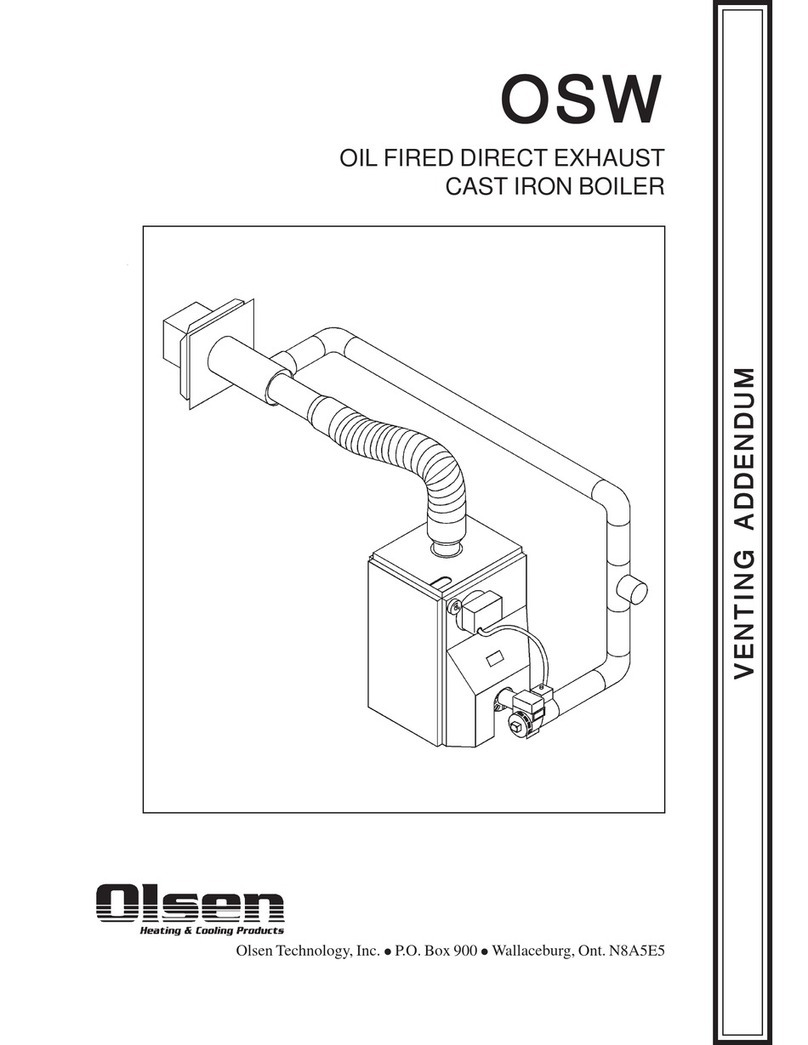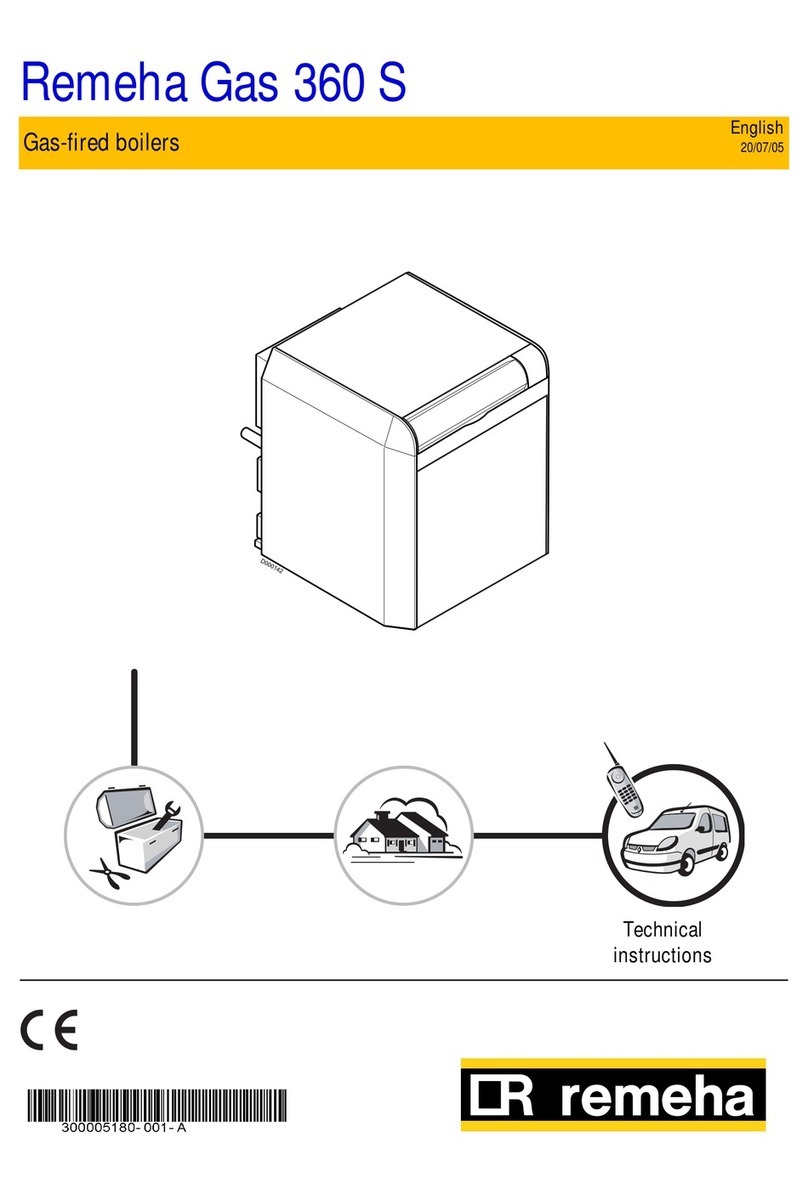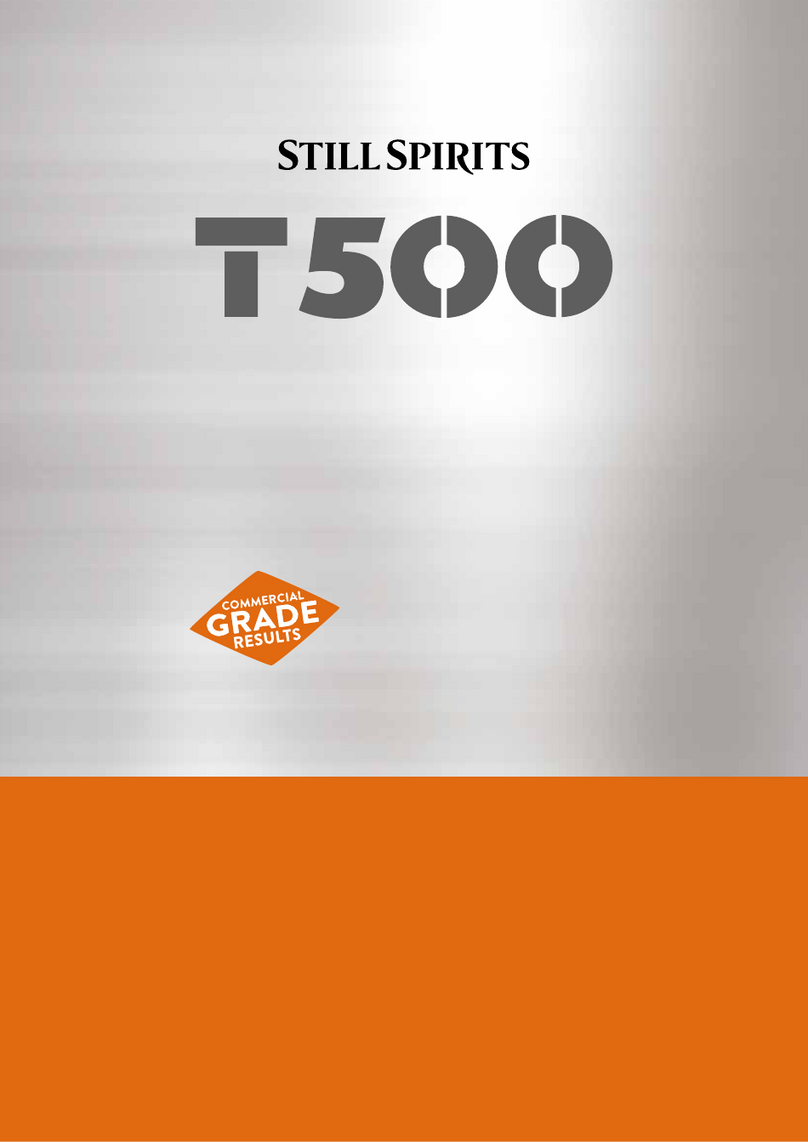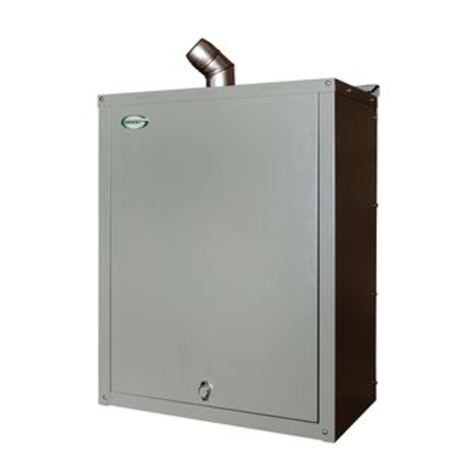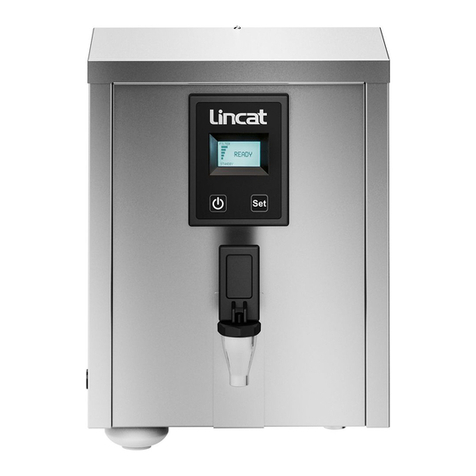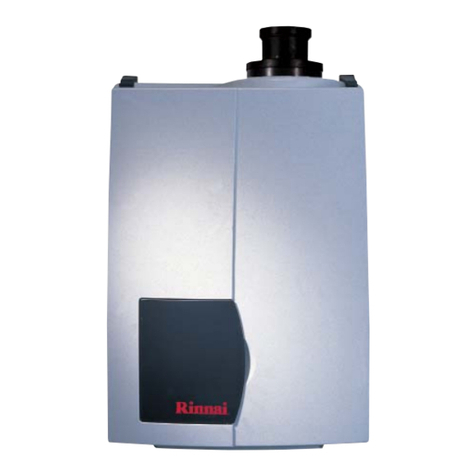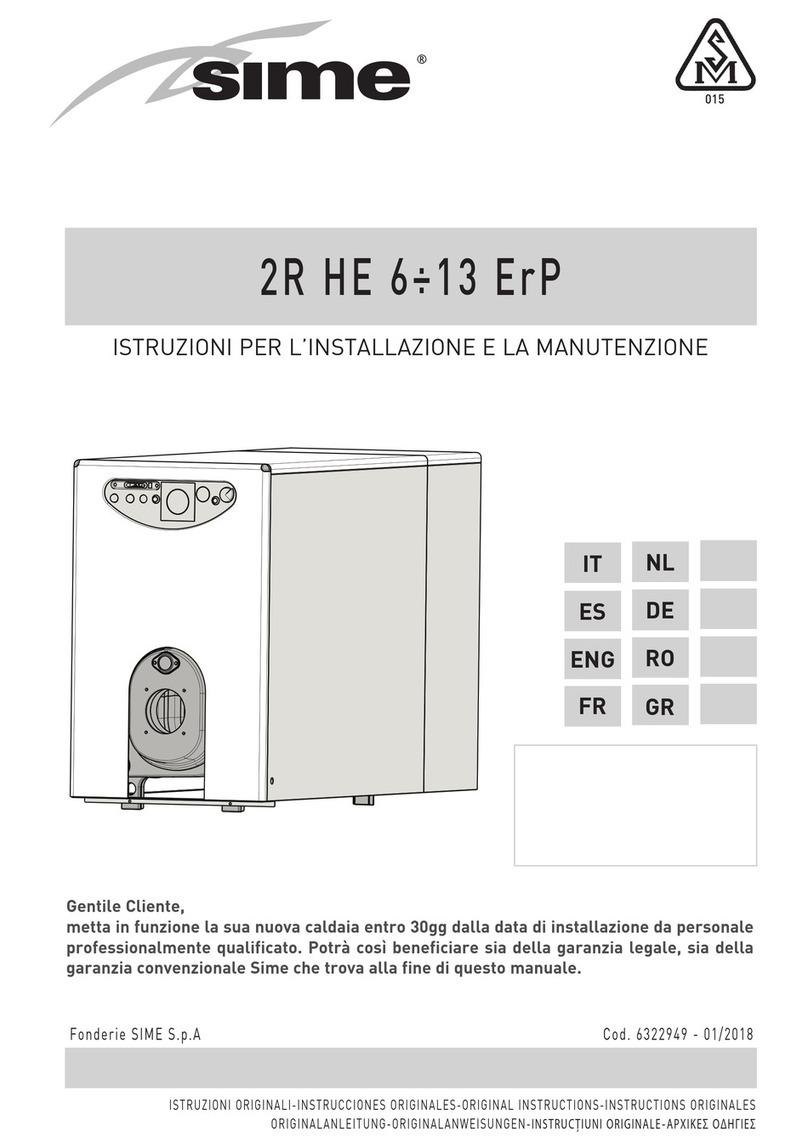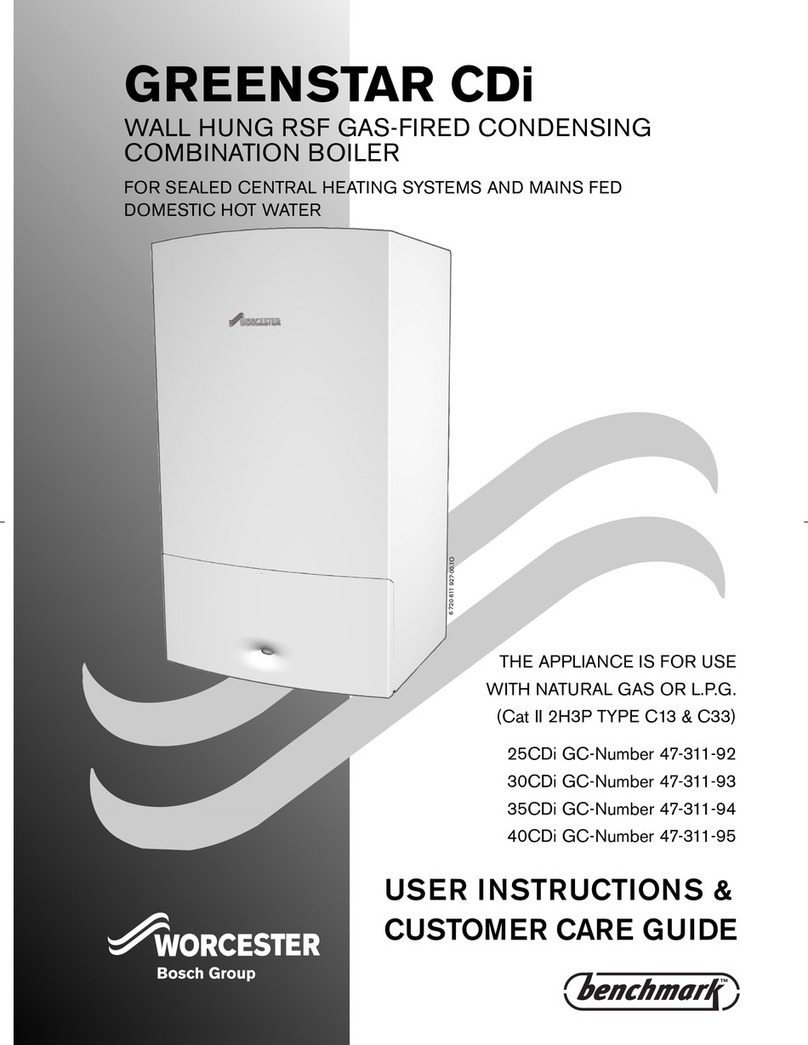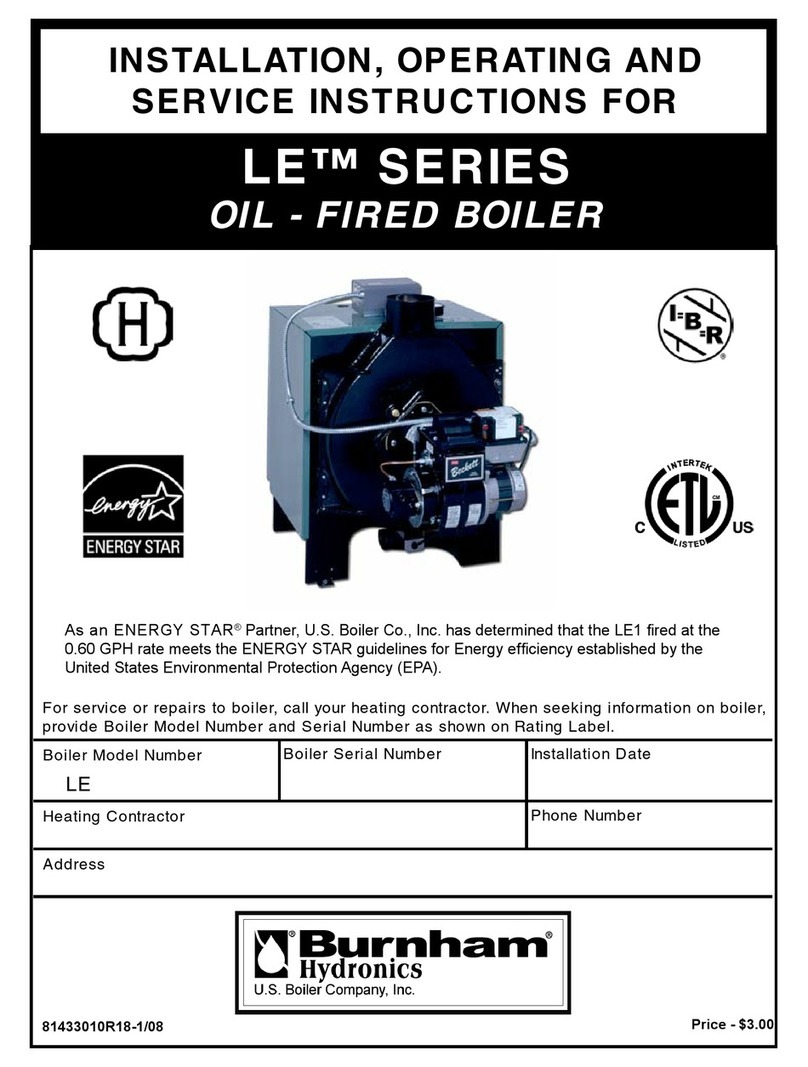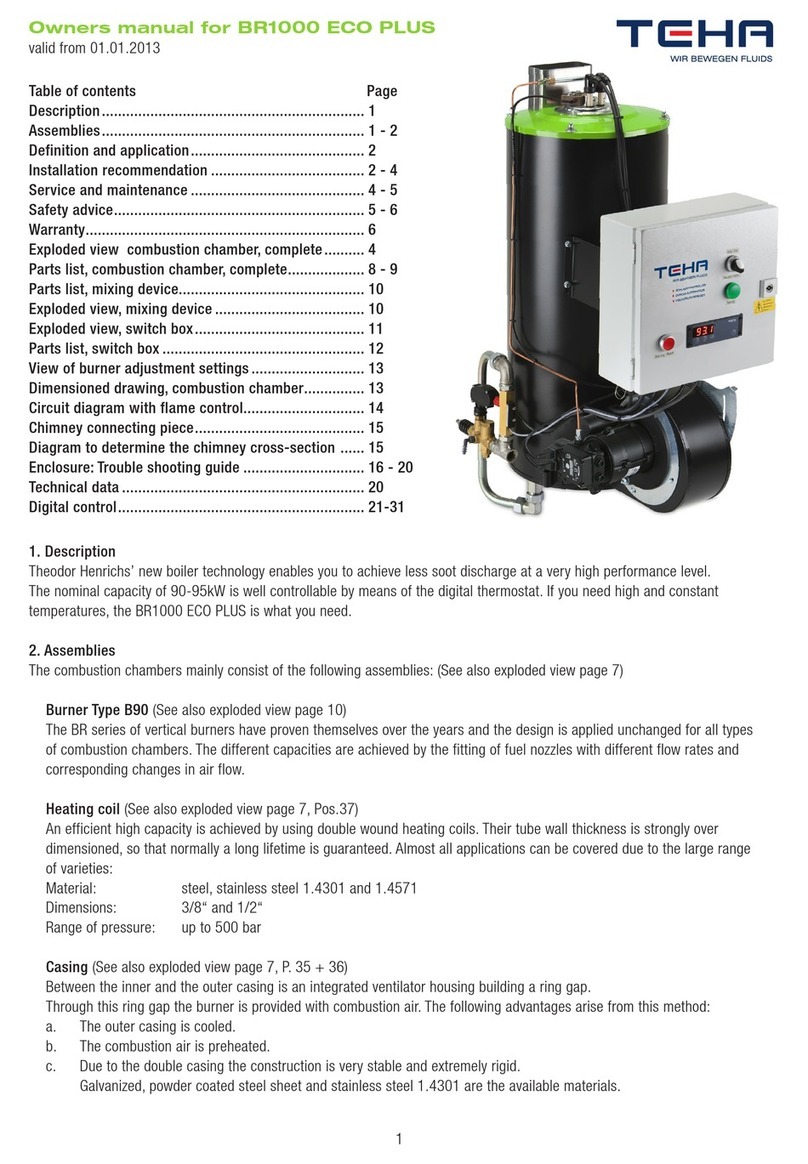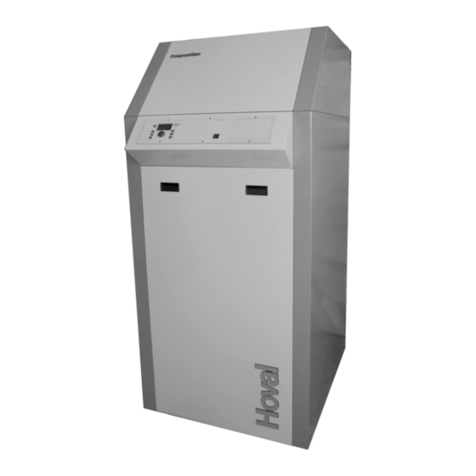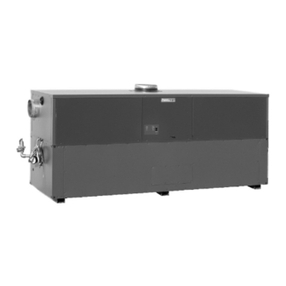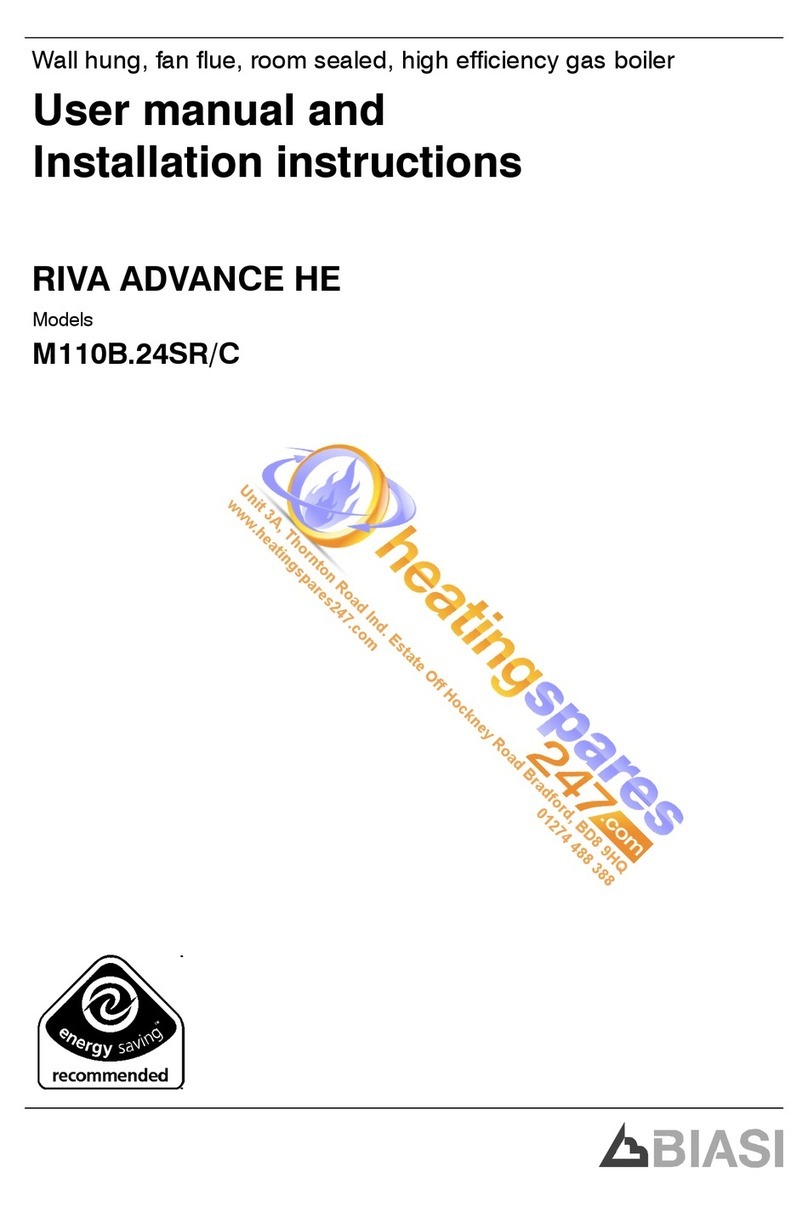The above drawings show the main boiler elements. They
have the following specifications:
Burner –made out of fireproof steel. Its geometry is
result of numerous tests and measures. Equipped with
air intakes on various levels which contribute to
increased combustion efficiency. Biomass is transported
from the hopper to the burner by means of the auger
feed. On contact with embers and in connection with air
supplied by many ducts the process of pyrolisis of
biomass occurs. Exhaust fumes created in the process
are directed through the heat exchanger to the chimney
outlet through the chimney duct which is enhanced by a
fan, which also serves a role of providing a sufficient
amount of fresh air for proper combustion. The amount
of fuel and fresh air supplied for combustion is
automatically matched by the controller based on
exhaust fume measurements (oxygen content in exhaust
fumes) provided by the Lambda probe.
Combustion chamber –made out of fireproof steel.
From the moment of starting the ignition process it
quickly gains high temperature, which in turn improves
the combustion process and reduces the amount of un-
burnt gas. It is also isolated between the flame and
boiler wall.
Revolving hatch –it is a factory assembled element.
Ensures perfect tightness between the hopper and auger
feed. Guarantees very precise dosage of pellets.
Ignitor –allows for completely automatic ignition of
pellets is controlled by the PCB.
Turbulator (turbulators) –designed to increase the
effectiveness of heat exchange by momentarily slowing
down the speed of the exhaust flow. Additionally, they
are periodically, automatically put in motion by this and
the heat exchanger is cleared of ash. Releasing the user
from performing the task.
Automatic heat exchanger cleaning system (turbulators
drive) –a reduction unit controlled by automatics of the
boiler, that propels the turbulators.
Exhaust Outlet –contains a box that can be removed to
gain access to the boiler. On top of the box there is an
exhaust outlet and a turbine, responsible for the
extraction of exhaust towards the chimney. The electric
motor that is driving the turbine is controlled by a
microchip via a voltage regulator, which provides
voltage based on the measurements provided by the
Lambda probe. This solution has been used for many
years. Bottom combustion has a lot of benefits, and also
prevents the fire getting to the pellet hopper.
Auger feed –worm-gear that works in a sequential
pattern depending on the demand of the burner. The
auger provides a small amount of fuel that is released by
the hatch. This allows operation under minimal load.
The decantation chamber –expanding area located
underneath the heat exchanger allows the deposition of
unburned particles and dust hovering due to lower
exhaust fume speed.
Ash pan –located under the burner. Collects ash that is
removed from the burner, ash that drops by force of
gravity, and also ashes that origin from automatic heat
exchanger cleaning.
Automatic removal of ash from fireplace –occurs by the
supplied pellet, and also by fresh air flowing through the
burner.
Lambda probe –located in the exhaust outlet. The
purpose of the Lambda probe is to control the content of
oxygen in the exhaust. Using the measurements it allows
the optimisation of the combustion process used for fuel.
In combination with the temperature probe it guarantees
correct boiler operation, and doubles as a safety device.
Exhaust probe –pilots the ignition and also manages the
power of the boiler. Another role is to protect the boiler
from unforeseen temperature raise.
Display –located on the front of the boiler. Allows
browsing through and editing of the available control
parameters.
Electronics cover –covers the electric box that houses the
heart of the control circuit.
Pellet hopper –its capacity depends on the power of the
boiler. Theres also the possibility to connect it to an
external feeder, which supplies fuel from a repository or
large silo.
2.5 Boiler Equipment
A standard Greenflame Eco pellet boiler consists of:
Burner,
Ignitor,
Lambda probe,
Control M RS 420 controller,
Central heating sensor,
Flue temperature sensor,
Weather sensor,
Additional paid options:
Pellet silo,
Vacuum system & pneumatic pellet supply.
The ‘vacuum system’ is an optional fuel transportation drive,
available on all ‘eco’ models. The system ensures smooth
transportation of pellet from fuel store to boiler. With sensor
indication controlling and monitoring the fuel supply. Should
the hopper empty the vacuum will automatically refill in
defined periods of time. Auger system available upon request.




















